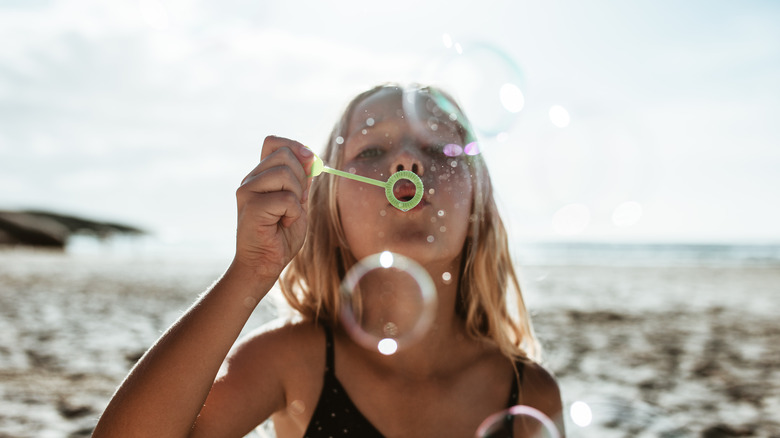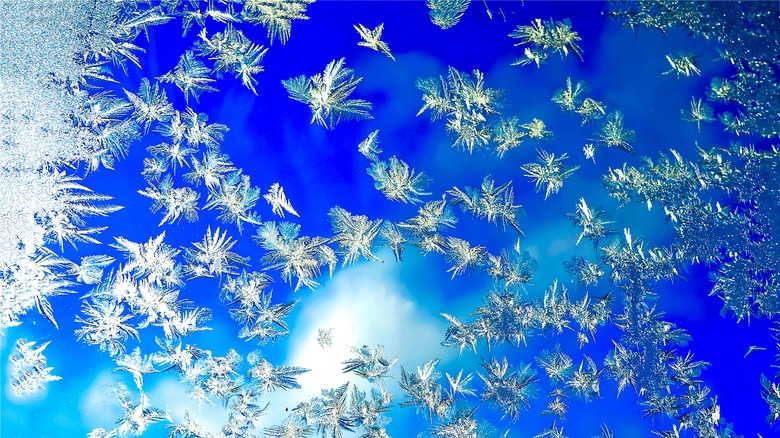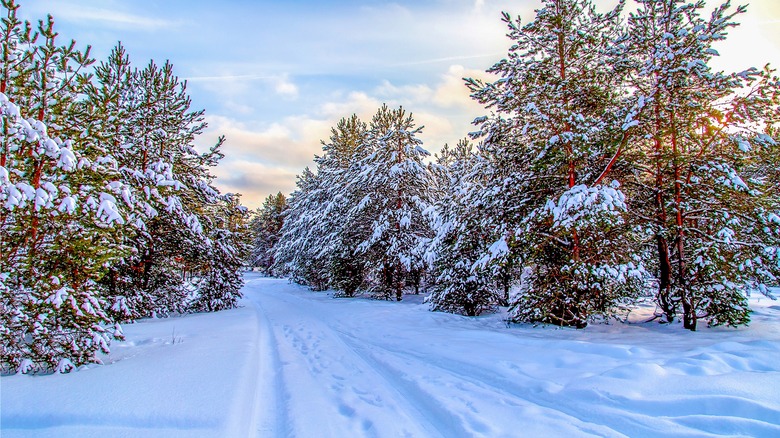What Happens If You Freeze Bubbles?
If you've ever seen those viral videos online where people blow bubbles outside on a cold day, you know how beautiful they look as they freeze. These bubbles don't freeze in the same way we would expect water to freeze, making stunning crystals appear on the surface and dance around until the entire bubble is frozen in place. Amazingly, these bubbles don't immediately pop, staying in their original shape even while completely frozen. It turns out the science behind these bubbles is also pretty fascinating as well.
When water freezes, it typically does so by starting to solidify at the coldest spot. For things like puddles, lakes, and other bodies of water, the freezing process will start at the top of the water and work its way down (via Britannica). New ice will begin to freeze the water next to it until the entire body of water is frozen. This order of freezing is known as a freeze front. According to a study published in Nature Communications, soap bubbles tend to not follow this freeze front pattern, creating some unique results.
Bubbles have a unique freezing pattern thanks to Marangoni Flow
When you freeze a bubble, the patterns you see result from an effect known as Marangoni flow. This Marangoni flow is created by the surface tension of the bubble and causes the ice crystals to spin around and move on the surface of the bubble until there is enough ice for them to become frozen in place (via Nature Communications). Once fully frozen, a crystalized pattern is left behind.
Unfortunately, frozen bubbles are not stable, so they don't last very long. The beautiful patterns created by Marangoni flow also result in cracks along the surface. These cracks aren't present when the bubble is still in a liquid state, keeping air trapped inside and the bubble intact. According to Popular Science, the cracks in frozen bubbles allow the air underneath to escape, causing the bubble to collapse. Still, the frozen bubbles tend to last long enough to take photos of the stunning results.
During cold weather you can create your own frozen bubbles
While the experiment published in Nature Communications tested supercooled soap bubbles, it is possible to create them yourself at home under the right conditions. According to AccuWeather, you can use regular bubble solution from the store or make your own using one part water, four parts dish soap, and a tiny amount of corn syrup to give your bubbles more thickness.
Once you've purchased or made your bubble solution, Popular Science recommends storing it in the freezer for at least 30 minutes for best results. You can use a dipstick designed for blowing bubbles or a straw. According to The Weather Network, the best temperature to get ice crystals for this experiment is extremely low — between 14 and -13 degrees Fahrenheit, but any temperature below 32 degrees Fahrenheit will allow your bubbles to freeze. Gently blow your bubbles on a smooth surface outside and wait for the magic to happen. Remember to be patient! As mentioned earlier, bubbles are extremely delicate, so it may take a few tries to get it right. Once you succeed, you'll have beautiful crystalized bubbles!


